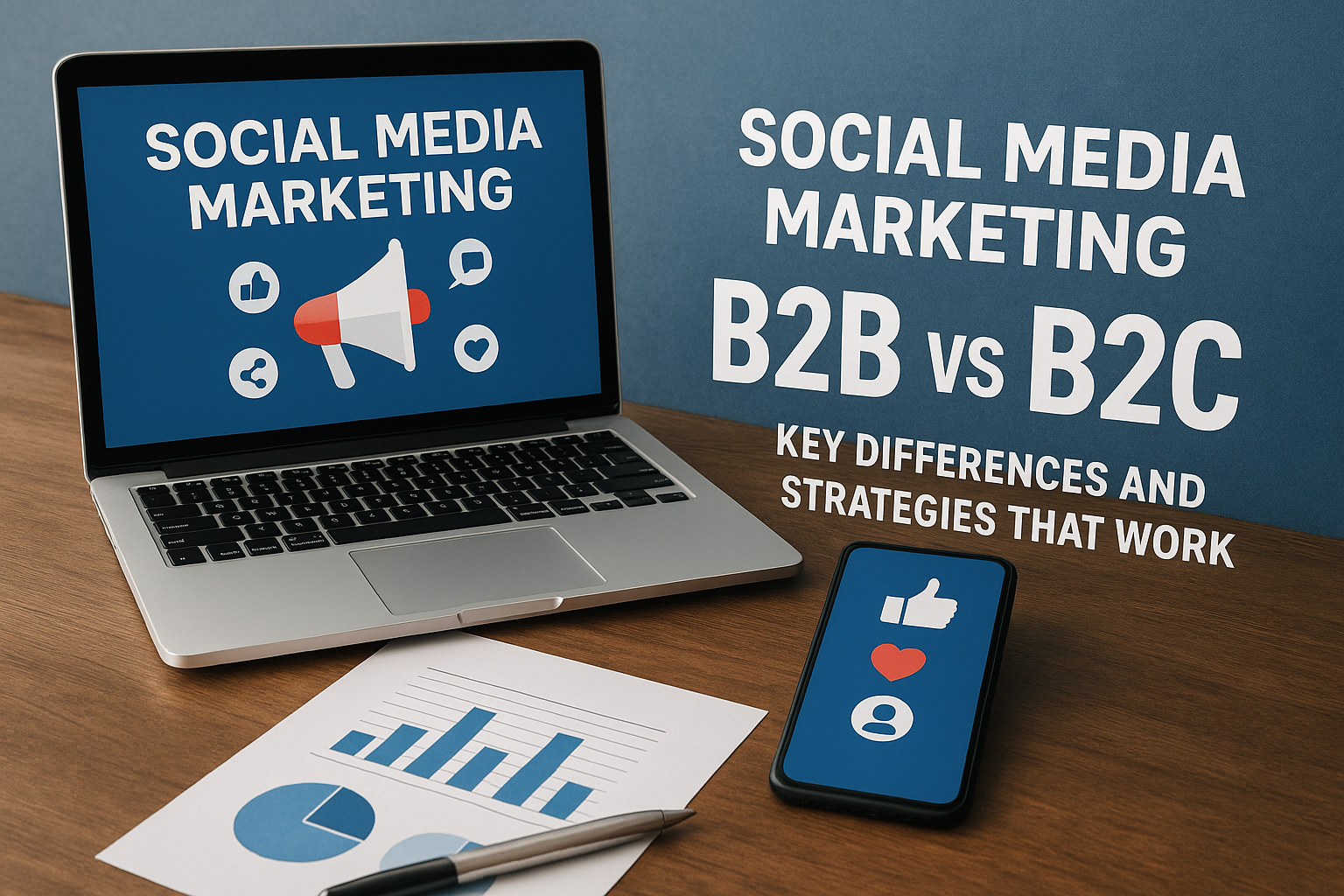Introduction: The Shift Toward Authentic Influence
Over the past decade, influencer marketing has evolved into a powerful form of authentic communication. Once ruled by celebrities and mega influencers, it’s now driven by everyday creators the Micro vs Nano-Influencers whose genuine, relatable, and trustworthy voices shape how brands connect with their audiences.
This shift reflects a powerful truth: audiences no longer crave perfection; they crave authenticity. Consumers today are more likely to engage with creators who share their lifestyle, values, and experiences. That’s where Micro vs Nano-Influencers come into play the new generation of digital voices driving meaningful engagement and measurable impact for brands.
Understanding Micro vs Nano-Influencers goes beyond follower count it’s about shaping your marketing strategy around genuine authenticity that truly connects with your audience.
What Are Micro and Nano-Influencers?
Micro-Influencers typically have between 10,000 and 100,000 followers. They’ve built their reputation within a specific niche whether it’s fitness, fashion, tech, or finance. Micro-influencers are trusted for their expertise and their ability to educate or influence decisions within that niche.
In the context of Micro vs Nano-Influencers, nano-influencers have a smaller yet highly engaged audience typically between 1,000 and 10,000 followers. Their close, personal connections with followers foster genuine trust and deliver exceptional engagement within their communities.
The biggest difference lies in the kind of influence they wield. Micro-influencers extend reach and credibility, while nano-influencers create intimacy and authenticity. In brand partnerships, both play distinct yet complementary roles micro-influencers help brands scale awareness, while nano-influencers drive deep community engagement and conversions.

Micro vs Nano-Influencers: Key Differences That Matter
When it comes to Micro vs Nano-Influencers, the contrasts go beyond just numbers.
| Aspect | Micro-Influencers | Nano-Influencers |
|---|---|---|
| Follower Range | 10K–100K | 1K–10K |
| Engagement Rate | Moderate to high | Extremely high |
| Cost per Collaboration | Mid-range | Budget-friendly |
| Audience Type | Niche yet broad | Hyper-local or specific |
| Brand Fit | Awareness & credibility campaigns | Engagement & trust-building campaigns |
Data consistently shows that nano-influencers can generate up to 2x higher engagement than micro-influencers because their audiences perceive them as peers rather than promoters.
So, if your goal is brand awareness, micro-influencers may be the right choice. But if you want genuine conversations and community trust, nano-influencers are your go-to.
Why Authenticity Wins in the New Marketing Era
Audiences have grown weary of overly polished ads and influencer posts that feel scripted. The new marketing era is all about authentic storytelling and Micro vs Nano-Influencers excel at it.
They share real-life experiences, not rehearsed endorsements. A nano-influencer might post about how a skincare product helped them through a genuine skin issue, while a micro-influencer might create a detailed tutorial explaining the product’s science. Both are authentic but in different ways that resonate with different audiences.
Brands like Glossier, Zomato, and Daniel Wellington have built their success by partnering with smaller influencers who embody their brand values. Authenticity drives emotional connection, and emotional connection drives sales that’s the new formula of modern marketing.
Choosing Between Micro and Nano-Influencers
Not sure which influencer type fits your brand? Here’s a quick guide to help you decide:
Choose Micro-Influencers if:
- our goal is to increase brand awareness or credibility.
- You want access to a niche audience at scale.
- You can invest in mid-tier influencer partnerships.
Choose Nano-Influencers if:
- You want high engagement and authentic conversations.
- You’re targeting local or community-based marketing.
- You have a limited budget but need strong trust-building.
Pro Tip: Many brands are now blending both tiers using micro-influencers for reach and nano-influencers for conversion creating a hybrid strategy that balances scale and authenticity.
Content Strategies That Work for Each Influencer Type
The content style and strategy for Micro vs Nano-Influencers should differ based on audience behavior and campaign goals.
Micro-Influencers:
- Create tutorials, explainer videos, and expert reviews.
- Work well for thought leadership or educational content.
- Ideal for longer collaborations with professional visuals.
Nano-Influencers:
- Shine in everyday lifestyle content stories, selfies, and reels that feel spontaneous.
- Great for UGC (User-Generated Content) campaigns.
- Perfect for authentic product integrations within daily routines.
While micro-influencers can help position your brand as credible and aspirational, nano-influencers humanize it making your brand feel approachable and real.
Measuring Success: Metrics That Matter
When analyzing Micro vs Nano-Influencer campaigns, brands often focus on vanity metrics like follower count but that’s a mistake. What truly matters is engagement and conversion quality.
For Micro-Influencers:
- Track metrics like reach, website clicks, and lead generation.
- Evaluate content quality and alignment with brand tone.
For Nano-Influencers:
- Measure engagement rate, comment sentiment, and brand mentions.
- Track conversion actions like sign-ups, coupon redemptions, or reviews.
Also, don’t ignore qualitative data genuine conversations, testimonials, and audience feedback often reveal more about campaign impact than pure numbers.
Common Mistakes Brands Make in Influencer Selection
Even seasoned marketers make errors when choosing between Micro vs Nano-Influencers. Here are the most common pitfalls:
- Overvaluing follower count: A million followers mean nothing without engagement.
- Ignoring niche alignment: Always prioritize relevance over reach.
- Micromanaging creativity: Influencers know their audience best trust their content style.
- Copy-pasting strategies: What works for a micro campaign might flop for nano-level creators, and engagement tactics.
The key is collaboration, not control. Let influencers tell your brand story in their authentic voice that’s what makes audiences believe.
Future of Influencer Marketing: The Power of Small Communities
The future of influencer marketing is small and that’s a good thing. As online audiences fragment into niche communities, brands are realizing the value of connecting deeply rather than widely.
Micro and nano-influencers lead this shift by cultivating micro-communities where shared interests drive loyalty and advocacy. These communities thrive on authenticity, interaction, and shared purpose three elements large-scale campaigns often lack.
Emerging technologies like AI-driven influencer matching and data-backed authenticity scoring are helping brands identify ideal creators faster and measure real influence more accurately.
In the coming years, Micro vs Nano-Influencers will become the backbone of social marketing not because of their size, but because of their trust.
Conclusion: Building Authentic Brand Influence
The debate of Micro vs Nano-Influencers isn’t about choosing one over the other it’s about understanding how both can serve your brand goals differently. Micro-influencers bring expertise and scale, while nano-influencers offer trust and intimacy.
In a digital world where consumers scroll past ads in seconds, authenticity is the only currency that matters.
So, whether you’re a startup looking to grow your reach or an established brand aiming to reconnect with your audience remember this: the smallest voices often make the biggest impact.
Ready to find the right influencers for your brand? Start building genuine connections today.


